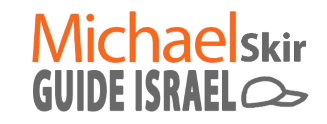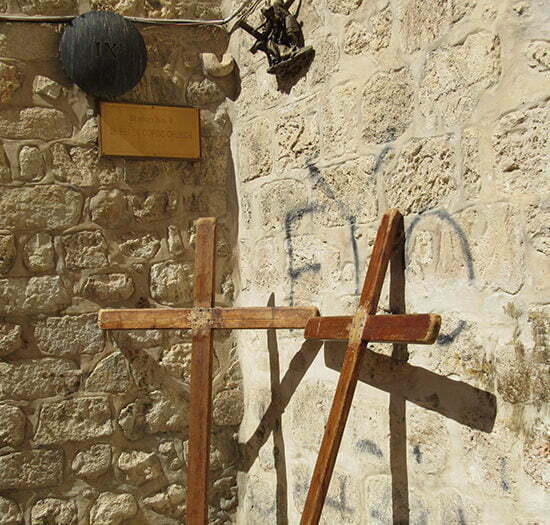Holy Sepulchre
per person
Church of the Holy Sepulcher:
Building history-At the time of the crucifixion, there was probably a quarry outside the city walls, since the Jewish burial, like the Roman burial,
It was not possible within the city walls. Then the rocky hill, called Golgotha, rose above it.
Ahead, on the eastern slope of another hill, was the burial cave. In Caesar Byzantium’s construction operations
Constantine, the rock around Calvary and the tomb were removed and these two were incorporated as focal points in the complex of erected buildings.

In the tomb, the Romans erected a temple for Aphrodite. This temple was removed at the beginning of construction by Constantine.
There were four main parts of the tomb church in the late 4th century, from west to east: the roundabout, the atrium
From the rotunda, basilica and atrium of the basilica.

The Basilica of Constantine, also called Martyrion, was inaugurated on September 17, 335 AD. Just ahead
At the end of the 4th century, the roundabout was completed, in the center of which was the tomb, covered with a dome.
The diameter of the roundabout was about 35 m and its external walls were fixed with 3 aphids, in the south, west and north. Around the grave there was a second circle, about 20 m in diameter, with 12 columns and 4 pairs of art. The skull rock was incorporated in the south corner East of the atrium of the roundabout and the basilica was built east of the atrium of the rotunda. Basilica had
A large main lounge and 2 sun loungers on each side. The northernmost basilica of the Basilica is the same as the main street
Coptic patriarchy. The north wall of the Basilica was preserved in the Copticuu Monastery Wall
The northern columns, preserved on the wall of the Ethiopian courtyard. The atrium was built east of the basilica, with the front facing
The main street of the Byzantine city, Cardo Maximus, had 3 openings followed by a staircase. This section of
The basilica, which probably belonged to the structure of the Roman period, has been preserved until today and is integrated in the
Alexander Nevsky Church east of the Church of the Tomb. The remains of the atrium from the atrium facade are possible
See the bakery facing Beit HaBed, next to the stairs that lead to the Ethiopian courtyard and the Patriarchate the Coptic.

In 614 AD, the Persians invaded Israel and systematically destroyed monasteries and churches. On May 4, Jerusalem was conqueredn and a massacre was carried out on its Christian population. The sanctuary and other buildings were burned and the cross that was on top of a rock
The skull and discovered by Helena, Constantine’s mother, was taken by the Persians. After the victory of the emperor
Byzantine heraclius of the Persians, in 628, the cross was restored and applied in the restoration of the ruined buildings, under his administration
From Modesto, the Patriarch of Jerusalem. In 638, the Arabs conquered the city. The Muslim occupation was not
Accompanied by acts of destruction and Christianity, freedom of worship and the preservation of mind and property were guaranteed. Modestus has changed, but little
From the 4th century assembly plan, the central entrance to the rotunda was blocked and a tower was erected above the skull rock.
These buildings remained standing until the beginning of the 11th century
Systematic and deliberate destruction caused the structure, Fatimid Al-Kha’am replaced Amar Allah, an anti-Christian extremist religious fanatic who commanded destroy the church on the floor. The act of destruction began on September 28, 1009. That was the reason Europe’s official crusade for the Middle East. Constantine’s Basilica was completely destroyed, except
the pieces that were built against the sculpted rock, such as the Calvary rock and the tomb itself.

Restoration work began in 1030, under the auspices of the royal court in Constantinople and with the permission of Muslim rulers
In Cairo. The works were completed during the reign of the Byzantine emperor Constantine Monomachus. A church was built there
Round, with a gallery above the tomb and around it, is the restored roundabout. On the eastern side is a high apse
And it contains the altar of the round church. Above the roundabout, a dome is formed in the form of a cut cone, with its head open to the sky.
The crucifixion, Calvary, was incorporated in the southeast corner of an open courtyard – the sacred garden, in the atrium
From the 4th century roundabout, east of the church. In the eastern wing of the sacred garden, 3 chapels were built and the south
At the Rotunda, at the Batista site (Batista site), 3 chapels were erected with prominent aphids to the east.
A fourth chapel was placed north of the roundabout. These four chapels still exist today. The main entrance to the complex was set up from the south, through the entrance area – the congratulations – delimited in the south by a row of columns with arches. Up the corner to the southeast of the complex is an octagonal dome, covered by a dome, which still exists today.
On July 15, 1099, the Crusaders conquered Jerusalem. In the sanctuary, the long-awaited purpose of the Crusade,
The magnificent structure













